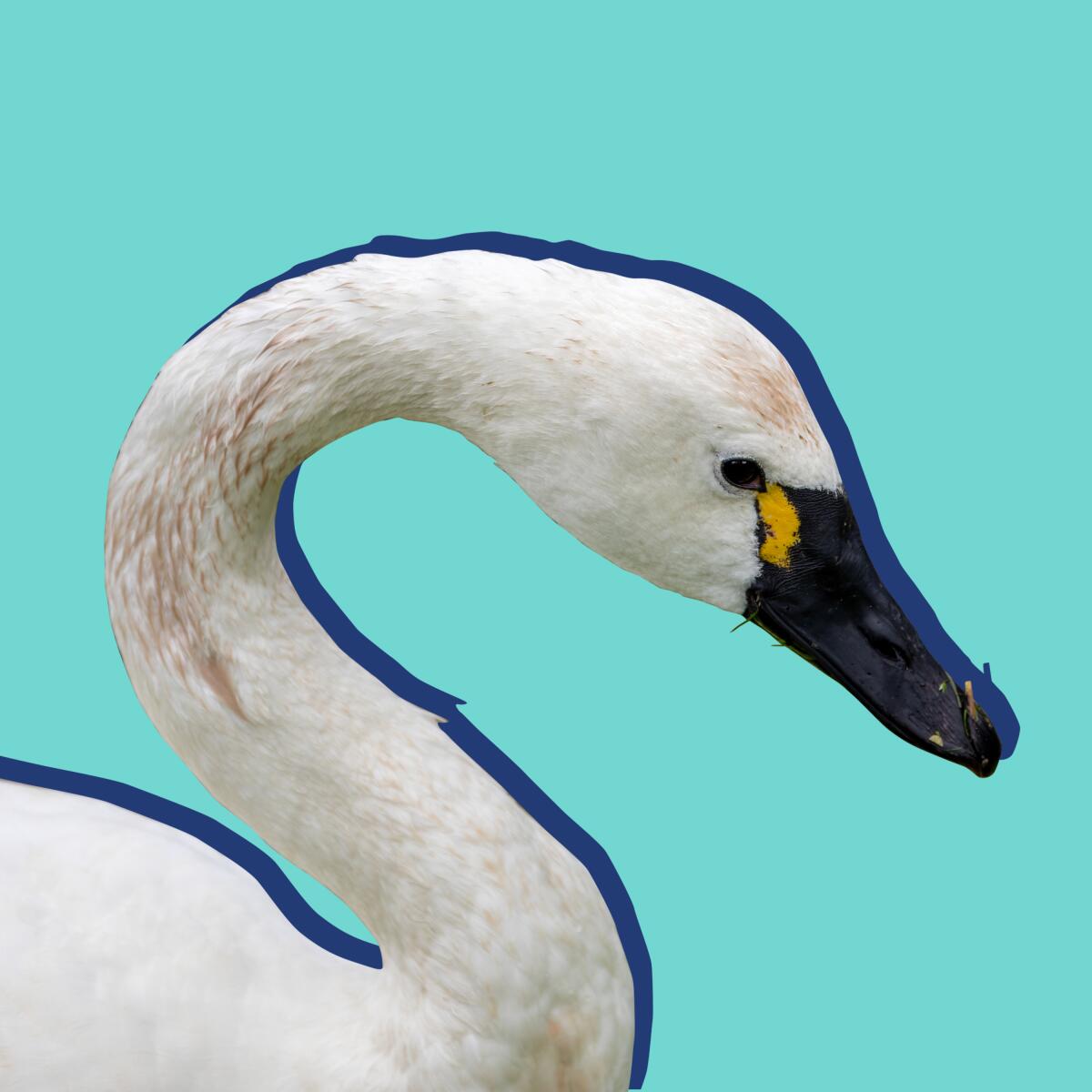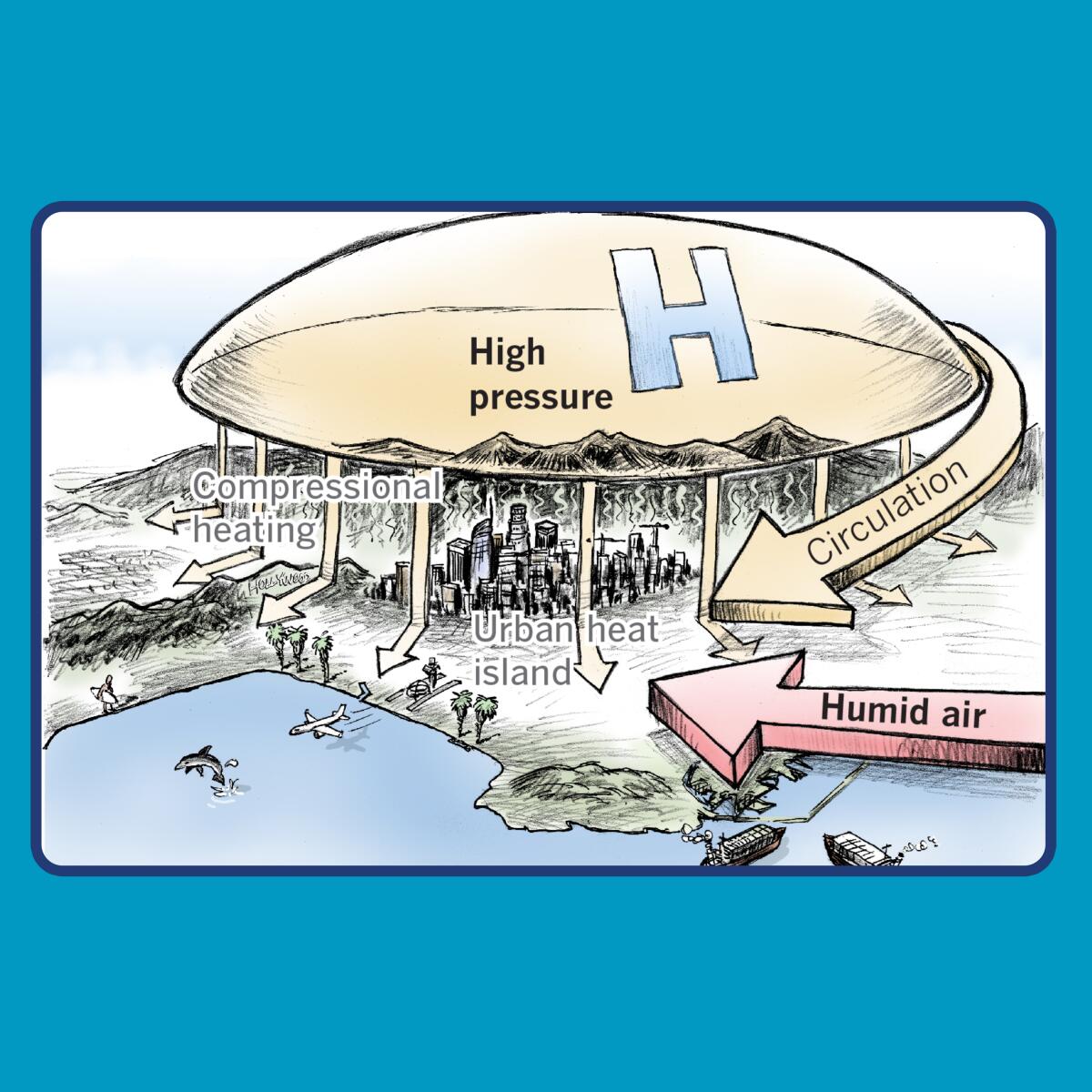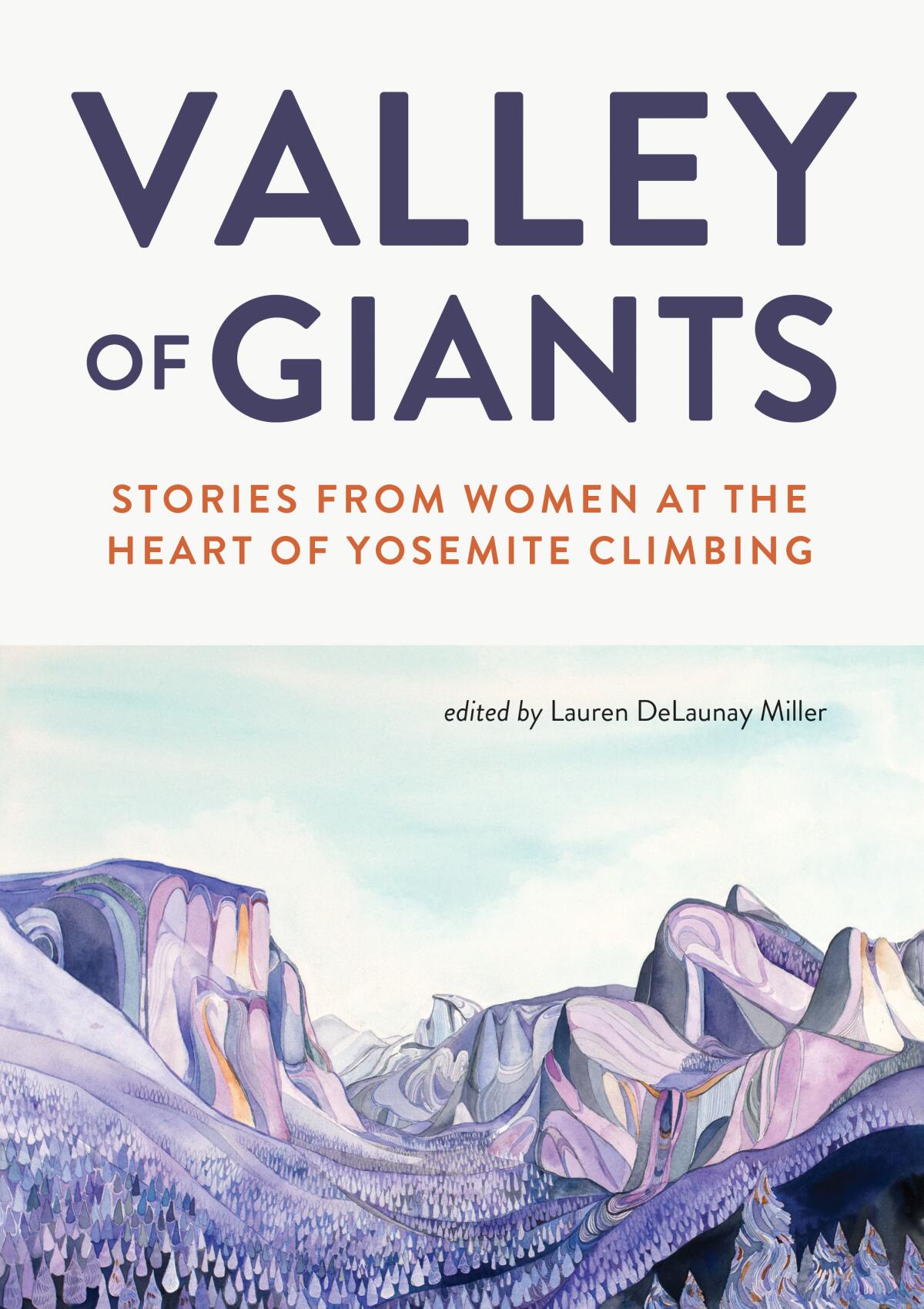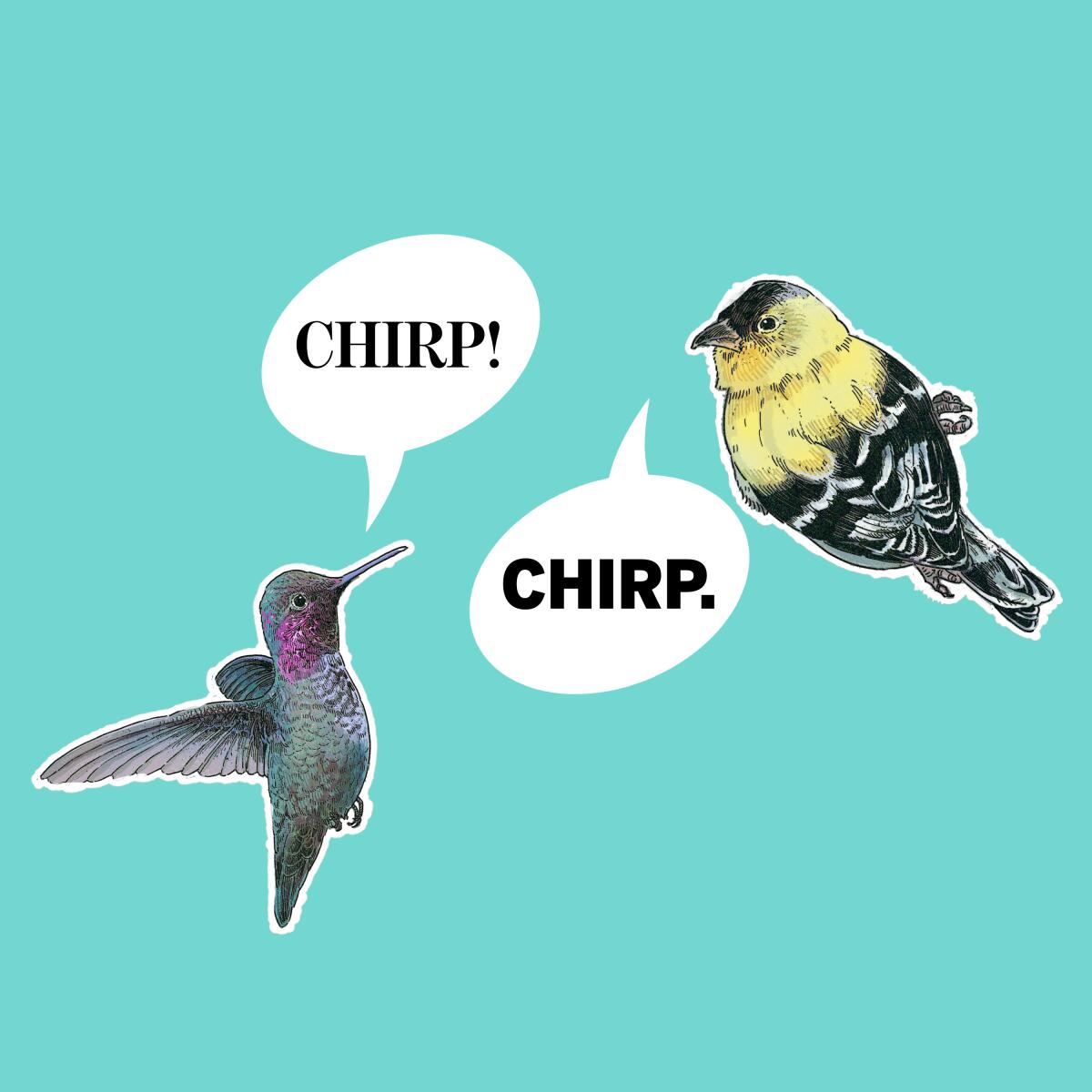Where to find L.A.’s prettiest redwoods

- Share via
Some of the prettiest coastal redwood trees in Southern California frame a hidden chapel on the Palos Verdes Peninsula. However, first know this: Coastal redwood trees don’t naturally grow in L.A. They thrive in cold, foggy coastal zones from the Oregon border to the Santa Lucia Mountains in southern Monterey County. Sequoia sempervirens that grow outside their natural range have been purposefully planted.
That’s what happened in 1951 when architect Lloyd Wright, son of famed architect Frank Lloyd Wright, was tapped by the Swedenborgian Church to construct a chapel on a hill overlooking the ocean. Inside, he used redwood pillars that climb and form tree-like branches overhead to frame the building. Outside, coastal redwoods — not as big as ones up north — embrace the building with leafy limbs. Italian stone pines provide a second line of trees. The walls are glass, bringing nature and faith together in an indoor-outdoor spiritual space.
Wayfarers Chapel still stands today. Anyone can stop by to visit the site at 5755 Palos Verdes Drive South in Rancho Palos Verdes (it’s sometimes off limits to visitors if there’s a wedding or other ceremony taking place).
Where else can you find redwoods outside their natural range? Many places around SoCal. Some examples: Carbon Canyon Regional Park in Brea has a stand of coastal redwoods; an easy loop trail gives you closeup views. (Check out the hike details here). You’ll also find redwoods in Griffith Park’s Cedar Grove and Fern Dell areas.
4 things to do this week

1. Take a hike to the waterfalls in Monrovia Canyon Park. These waterfalls were off limits for about a year after the 2020 Bobcat fire swept through the Angeles National Forest. Trails in Monrovia Canyon Park, about 26 miles from downtown L.A., reopened Aug. 30 after volunteers removed debris and downed trees. However, you must reserve a spot before you go. Choose a long or short hike: three-quarters of a mile each way from the nature center, 1 mile each way from Middle Parking Lot or 1.5 miles each way from the ranger station. There’s more info here about the park and reservations. Check out other waterfalls on these hikes although not all may be running because of the drought.

2. Post a photo of your cherished pet at L.A. Zoo’s Day of the Dead altar. Ofrendas, or altars, are places to honor the memory of ones you have loved. It’s part of the Latinx tradition Día de los Muertos, or Day of the Dead, which takes place Nov. 1 and 2. The L.A. Zoo has created its first space for people to remember their pets. Bring photos (or print them on-site on Saturdays and Sundays), decorate frames and/or draw pictures of animals for the altar, which features an arch of orange paper flowers. Visitors may post their memories through Nov. 2 at the Beloved Pets Ofrenda at the zoo’s Tree Tops Terrace (with zoo admission; $22 for ages 13 to 61; $17 for ages 2 to 12; timed tickets bought in advance recommended). More info here.

3. Look for tundra swans at their favorite Northern California winter home. Tundra swans live in the Arctic but like to spend winter in California. The birds, which weigh about 20 pounds and have a 5½-foot wingspan, congregate in huge numbers near Marysville in Yuba County, where you also are likely to see geese, ducks, shorebirds and raptors. Free two-hour swan tours are hosted by the California Department of Fish and Wildlife at 9:30 a.m. and 1 p.m. on Nov. 6, 13, 20 and 27; Dec. 4, 11 and 18; and Jan. 1 and 8. Register in advance by emailing genelle.treaster@wildlife.ca.gov.

4. Join a women’s cycling weekend in Napa Valley. Here’s a strange pairing: chefs and cycling pros. The two come together during a women’s event Oct. 22-24 called CampoVelo, a wine country bicycling weekend that has plenty of eating, drinking and riding. You can choose the easy 20-mile flat Cupcake Route led by chef Kara Lind or opt for 30- and 57-mile spins along country roads. Cycling pros including Lauren Hall will attend. Entry costs $245 for a single day or $795 for three days. More info here.
The red flag

Do L.A.’s hottest days seem different than past years? There’s a reason for that. “Climate change is transforming the character of the West’s hottest periods — making them more frequent, more persistent, more humid and more lethal,” a Times story reports. “Experts say this shift in heat waves should prompt changes in emergency notifications and public health response to keep the death toll from rising. But that isn’t happening.” What will it take to get people to wake up to the potentially deadly threat? Read the full story here.
Cool stuff

Lauren DeLaunay Miller fell in love with climbing in Yosemite. Then she set out to find women from the past who had been fascinated with the big granite walls. She discovered they were largely left out of the park’s climbing history. Now Miller has pulled together an anthology of stories and essays called “Valley of Giants: Stories From Women at the Heart of Yosemite Climbing” (due out in April from Mountaineers Books).
“I’m not a historian by trade, but it doesn’t take a genius to see that, oh, in 1972 and 1973, we get Roe vs. Wade, we get Title IX, and we also get the first all-female ascent of El Capitan,” she told Climbing magazine. “These things are not coincidences. This book is about climbing, of course, but it really showed me how much it’s not just about climbing.”
The must-read

Remember when we were hunkered down during the early days of the pandemic? There was a lot less noise. “We have glimpsed what might happen with less human noise,” neuroscientist Nina Kraus wrote in an L.A. Times opinion piece. “While the human world temporarily became quiet in the early weeks of the COVID-19 pandemic, the natural world seemingly spun the volume knob up, to levels not heard in decades. Many of us who opened a window or gingerly stepped outside in the spring of 2020 suddenly heard birdsong everywhere.” Kraus thinks we should take note of this, because “the power of sound is often under-recognized,” particularly when it comes to how plants and animals respond. Read the rest of the piece here.
P.S

Snow has arrived in the Eastern Sierra. Mammoth Mountain Ski Area in Mammoth Lakes, Calif., received its first blast of the white stuff this week, with a foot at the base level and 14 inches atop the 11,053-foot peak. The resort doesn’t plan to open until Nov. 13, but snow-making has begun.
Opening dates (weather permitting) for California resorts include Nov. 19 for Snow Summit and Nov. 26 for Bear Mountain at Big Bear Mountain Resort in Big Bear Lake; after Nov. 1 for Mountain High near Wrightwood; and Nov. 24 at Snow Valley Mountain Resort in Running Springs. Tahoe-area resorts: Nov. 19 for Heavenly Ski Resort, Nov. 24 for Palisades Tahoe (formerly Squaw Valley) and Dec. 3 for Kirkwood Mountain Resort.
Send us your thoughts
Share anything that’s on your mind. The Wild is written for you and delivered to your inbox for free. Drop us a line at TheWild@latimes.com.
Click to view the web version of this newsletter and share it with others, and sign up to have it sent weekly to your inbox. I’m Mary Forgione, and I write The Wild. I’ve been exploring trails and open spaces in Southern California for four decades.

Sign up for The Wild
We’ll help you find the best places to hike, bike and run, as well as the perfect silent spots for meditation and yoga.
You may occasionally receive promotional content from the Los Angeles Times.




